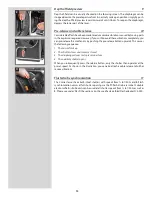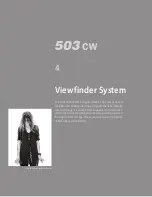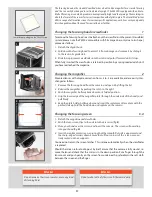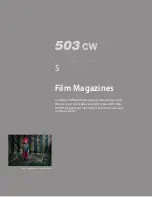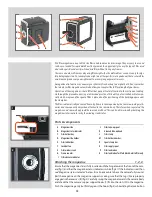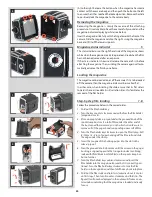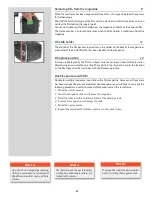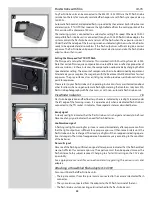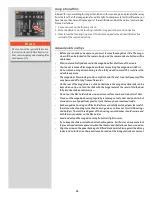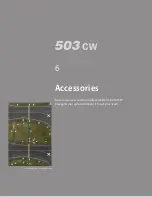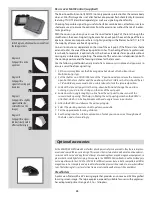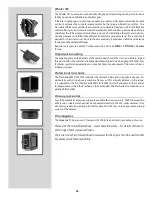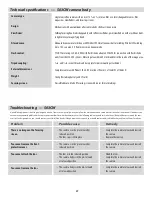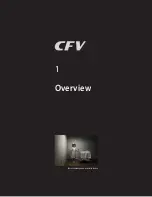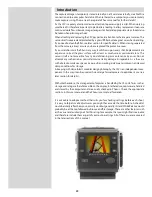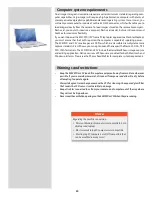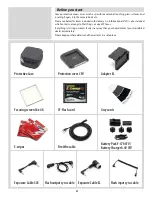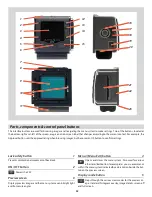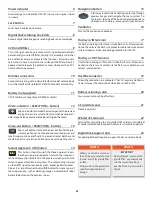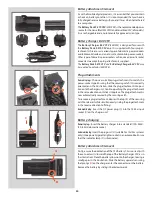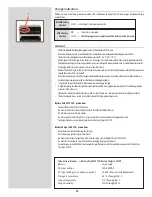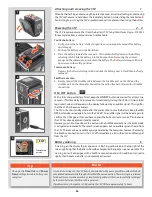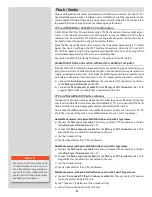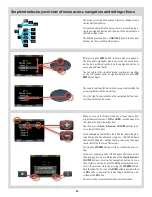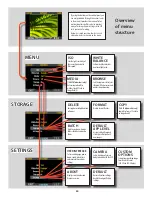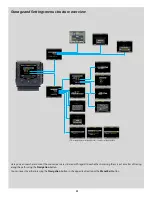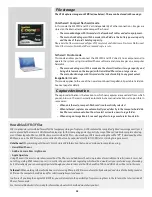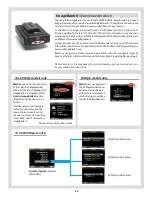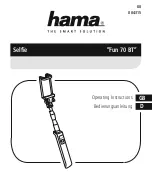
29
Introduction
The captured image is temporarily stored internally on a CF card or externally, via a FireWire
connection onto a computer hard disk. When tethered to a computer you can remotely
make captures using Phocus (see the separate Phocus manual for further details).
As the CFV is a purely electronic device, attention to power supply is vital. When working
untethered it is therefore important to plan battery loading
/
battery replacement to ensure
continued workflow. Likewise, image storage is limited and appropriate steps should also
be taken when planning a shoot.
When attaching and removing the CFV, pay particular attention to the image sensor area. The
sensor itself is covered and protected by a glass IR filter but take great care when handling.
If you need to clean the filter, see later section for specific details . When storing separated
from the camera, always ensure you have replaced the protective cover.
If you scratch or mark the filter in any way, it will show up on every shot. Replacements are
expensive so treat the glass surface with at least as much care as you would a lens. The
sensor itself is not accessible for any kind of cleaning or maintenance by a user. Do not
attempt any such action as you will almost certainly damage it irreparably. As is the case
with all electronic devices pay extra care when working in damp en vironments and avoid
damp conditions for storage.
In keeping with Hasselblad’s modular design philosophy, the CFV is an independent com-
ponent. In this way it can be used with view/large format cameras to optimize its use (see
later section for details ).
With untethered use, the management of captures is handled by the CFV unit. Tasks such as
storage and rating are therefore visible on the display. In tethered use, captures are handled
and stored by the computer and are visually checked in Phocus. Check the appropriate
sections in this user manual and the Phocus user manual for details.
It is advisable to adopt a method that suits you for checking settings before each shoot.
It is easy to forget small adjustments you might have made the time before. A checklist
would naturally reflect how you normally work but generally, ISO and White Balance would
probably be at the top followed by browse and file storage. There are other features such
as the visual and audio signals for IAA rating for example, that you might find invaluable
and therefore include them as part of your routine settings. All of these issues are covered
in the later sections of this manual.
Summary of Contents for CFV
Page 1: ...User Manual 503CW 503CWD CFV CFVII CFV 39 CFV 50 Version 10 ...
Page 2: ...2 Welcome to Hasselblad 503CW 503CWD CFV ...
Page 6: ...6 1 General Information Photo JoaoCarlos HasselbladMasters ...
Page 28: ...28 1 Overview Photo ClaudioNapolitan HasselbladMasters ...
Page 42: ...42 2 Getting Started Photo MarkHolthusen HasselbladMasters ...
Page 51: ...51 3 Previews Photo MarkZibert HasselbladMasters ...
Page 55: ...55 4 Batches Browsing Photo BangPeng HasselbladMasters ...
Page 61: ...61 5 IAA Instant Approval Architecture Photo LyleOwerko HasselbladMasters ...
Page 66: ...66 6 Delete Format Copy Photo JoaoCarlos HasselbladMasters ...
Page 72: ...72 7 Settings Photo NinaBerman HasselbladMasters ...
Page 73: ...73 Navigating the USER INTERFACE settings ...
Page 85: ...85 8 Cleaning Photo DirkRees HasselbladMasters ...
Page 87: ...87 9 Appendix Photo MarkHolthusen HasselbladMasters ...

